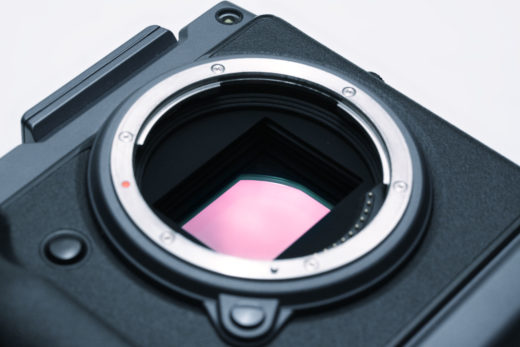
Let’s imagine what would happen if you walked into this coffee shop* and asked for a latte that was one point six times larger than a mug of mint tea you bought yesterday from a competing establishment. Even if you were a daily regular, the person behind the counter would be forgiven for frowning slightly, not necessarily because the answer is unclear – you’re a regular, remember – but because it’s such an abstruse way to ask for a venti.
Unfortunately, that’s what we’re doing when we use crop factors in discussion of focal lengths.
Crop factors we have known
The whole thing became popular when Kodak, Agfa, Konica and Fujifilm launched the Advanced Photo System in 1996. It wasn’t a terrible idea – an easier-to-handle, cassette-based film system which even supported some metadata – but it was really too late, quickly being eclipsed by then-emergent digital photography, and discontinued by the mid-2000s. It also seriously confused stills people by altering the field of view rendered by a lens of a particular focal length.
Most people are aware that a system of multiplication factors became popular so that people could quickly estimate what lens to use on an APS camera to create the same results they’d have enjoyed on 35mm. This holds into the modern world, where an APS-C digital stills camera, based broadly on the APS layout, renders an image with a field of view equivalent to that rendered by a lens 1.6 times longer on 35mm. A 50mm lens on an APS-C camera gives us the same view as an 80mm lens would on a 35mm camera – 1.6 times longer.
The mathematics works, and not only for stills. APS-C is very roughly the same sort of size as a Super-35mm film frame (APS-C is 16.7mm wide versus 18.6 for Super-35mm, though real world cameras which claim those sizes vary somewhat) and thus the multiplication is very roughly similar. The problem is that the multiplication factor we’re using to discuss focal lengths is based on a still photography format that has little or nothing to do with most motion picture equipment and isn’t nearly as familiar to most people as the behaviour of Super-35mm equipment in the first place.
Cropped close
This doesn’t happen a lot on set. Anyone asking for the eighty-divided-by-one-point-six would rate a very confused look from the second assistant. Instead, this sort of terminology is a malady of internet forums and social media, and it leaks into filmmaking by way of recent graduates with more enthusiasm than experience. It’s not even very smart in the stills world, given that quality stills cameras are available in at least four broad categories of sensor size, and many modern photographers grow up on inexpensive APS-C cameras. In situations where experience on full-frame cameras in either the stills or moving-picture world (Alexa LF and the like notwithstanding) may be rare, using full-frame as a field of view reference is practically a cruelty to the beginner.
The final irony of this is that both the motion picture and stills worlds have described 50mm lenses as “normal,” despite the huge difference in framing between full-frame stills and typical motion picture cameras using such a lens. The idea here certainly isn’t that the 50mm lens matches human vision, which has a massively wide overall angle of view and a real world focal length in the single digit millimetres. Rather, on a monitor or cinema screen, the 50 doesn’t show any of the perspective compression of long focal lengths or the yawning perspective of very short focal lengths.
But if it’s a normal lens on both APS-C and full frame, we’re being erroneously informed that it’s a normal lens on vastly different sensors. That’s balderdash, and goes some way to suggest just how much imprecision there is in this sort of focal-length philosophising.
In the end, the solution is for people – generally new entrants, for whom we probably all owe some sympathy at this slow time – to actually learn the equipment, so they can sensibly discuss focal length in the knowledge of what the camera is and how it will behave without resorting to middle-school mathematics. Otherwise, what we’re doing is to decide what lens we’d use on a full frame camera (as if we’d used one recently), remember the crop factor as it applies to the camera in use, do the multiplication, and to pick the nearest number out of the lens case. That’s insane.
So, let’s ensure there’s at least a virtual swear box everywhere there can possibly be one, and consign the phrase “crop factor” to the pit of ignominy in which it belongs.
* Your correspondent outlined this article in Jimmy’s Coffee on McCall Street in Toronto after having spent nearly forty-five minutes trying to find a coffee shop that wasn’t Tim Horton’s. No offence to Tim, but Jimmy’s oatmeal chocolate chip cookies well were worth the investment of shoe leather.
